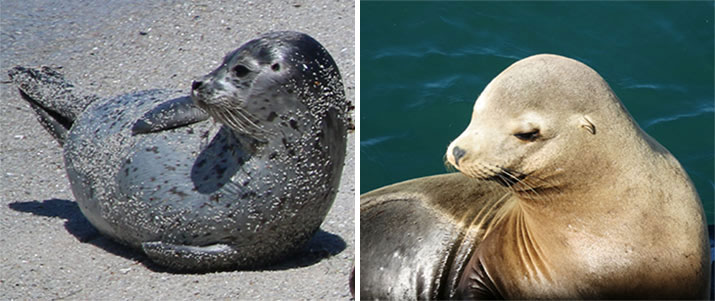Our California coast has an abundance of seals and sea lions, from San Diego to the North Coast. When you visit the beach at La Jolla, go whale watching in Newport, or bike along the water in Monterey, look for seals and California sea lions. Here’s a few tips about how to tell them apart:
- Who’s barking loudly? Sea lions bark, bark, bark and hang out together in groups. Elephant seals make sounds more like burping, screeching, snorting or growling.
- Look at the front flippers – Seals have very short, wide front flippers (harbor seals have claws too). Sea lions front flippers are long and narrow, and they use the flippers to move across the sand.
- Check out the ears – Sea lions ears are external, with a little flap folded over. For seals, the ear is internal and concealed.
- Eyes and body – Seals have big eyes (excellent vision under water) and a round or barrel shaped body. Sea lions are long and sleek, with a narrow head.
San Francisco is famous for Pier 39, where the California sea lions “haul out” on the wooden docks, loll around in bunches, and are noisy like second graders at recess. At the Santa Cruz wharf, out in the ocean sea lions relax in a circle around each other, but they’re also “surfers” – sea lions can ride on the crest of a wave.
Northern elephant seals are truly weird looking – it’s that big nose that looks sort of like it’s growing. And they are big, males can be thousands of pounds. Each year elephant seals return to the same breeding grounds at Ano Nuevo, Piedras Blancas, and Chimney Rock in Point Reyes.
On our last trip to Monterey, we saw harbor seals basking on the rocks in the water around Old Fisherman’s Wharf and rolling around the in the water – so much fun to watch.
Tip: On whale watching cruises off California, you may not always spot the big whales, but you can count on seeing seals and sea lions.
In our photo – on the left is lovely a harbor seal from Monterey; on the right, a self-confident sea lion in Santa Cruz.

